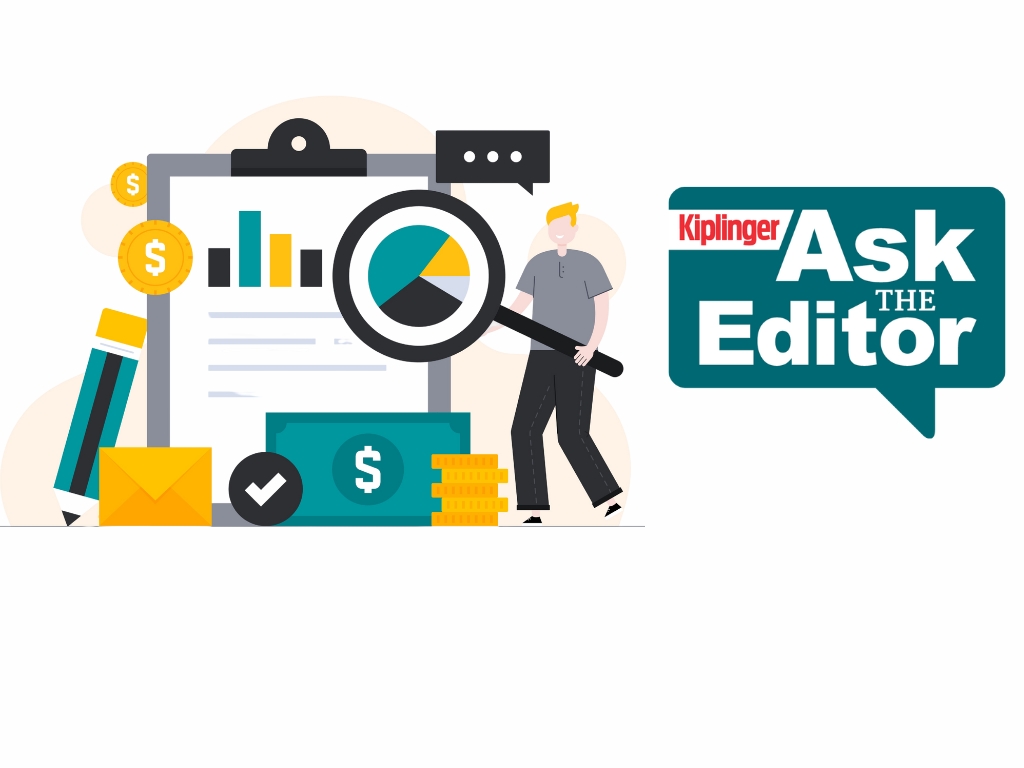3 Strategies to Help You Plan a Successful Semi-Retirement
If you’re ready to retire but don’t want to leave the workforce entirely, semi-retirement might be a good option for you. Before you take the leap, there are strategies that can help you navigate this lifestyle.


For decades, the goal has been to work hard, earn money and then retire! However, in recent years, the traditional retirement model seems to be changing. So, what’s the alternative?
More retirees are deciding to slowly leave the workforce by reducing their hours or finding more fulfilling jobs, even if they pay less. This trend is known as semi-retirement. In a recent survey by Express Employment Professionals, most retirees said they would choose semi-retirement if their employer offered it.
If you feel this lifestyle suits you, there are some steps you can start taking now to ensure you’re ready to transition to a semi-retired life.
From just $107.88 $24.99 for Kiplinger Personal Finance
Become a smarter, better informed investor. Subscribe from just $107.88 $24.99, plus get up to 4 Special Issues

Sign up for Kiplinger’s Free Newsletters
Profit and prosper with the best of expert advice on investing, taxes, retirement, personal finance and more - straight to your e-mail.
Profit and prosper with the best of expert advice - straight to your e-mail.
Prepare Your Finances
Before you consider transitioning to a partially retired life, make sure you have a plan for your finances. Even though you will still be bringing in money each month, make sure to check with your financial adviser to see how much money you have in your retirement accounts and how you can adjust your budget as needed.
If you’ve already started taking Social Security before your full retirement age and are still working, you will get a reduction in your benefits if you make more than the exemption amount laid out by the Social Security Administration. In 2022, that amount is $19,560. Fortunately, you will only see this reduction until you reach your full retirement age.
If you haven’t started taking Social Security benefits but you’re thinking about it, there are some things you’ll want to consider. You can start claiming benefits as early as age 62, but the longer you can afford to wait for those benefits, the larger your payments will be each month. Once you turn 70, those benefits won’t increase anymore, so it doesn’t always make sense to wait longer than that.
You will also want to consider your health care costs. If you are eligible for Medicare but decide to stay employed, you can hold off on taking Medicare Part B and D benefits and take advantage of your company’s health care plan if you work for a company with 20 or more employees. Since Medicare usually covers basic health care needs, using an employer plan could give you some financial support when you are paying for medications, hearing aids, dental care and even long-term care.
If you work for a company with fewer than 20 employees, you will need to apply for Medicare. In most small businesses, after age 65 your health expenses will be covered by Medicare first and any other employer-based plan second. Generally, your employer-based insurance at a small business may not cover all of your expenses.
Assess Your Employment Options
There are a number of employment options to consider when planning for semi-retirement. If you want to stay with your company, see if they offer semi-retirement options. You could reduce your hours and stay in your role, or use your knowledge to become a consultant or mentor for up-and-coming employees who could eventually slide into your current role. Not all employers offer this option, so make sure you do your research and talk to your boss.
With so many work-from-home options, you could also find a new job that is less demanding or is a passion project. You could work with your favorite non-profit in a part-time role or get involved with a local university and share your expertise with a new generation of professionals.
If starting a small business has always been your dream, this approach to retirement might be a good option. After breaking away from the 9-to-5 grind, you will have more time and money to turn your hobby into a business. With any new business, be prepared that you may have to spend more hours than you thought to get the business off the ground. Also, consider how much of your retirement funds you can reasonably spend. A financial professional can help you sort out what you need to live on and what you can put toward your new venture.
Plan for Taxes
If you are working in a part-time position during retirement and you aren’t bringing in enough income to live on, you may need to withdraw money from your retirement accounts, like a 401(k) or IRA. If you do, you will need to pay taxes on that income as well.
If you start withdrawing from your retirement accounts before age 59½, you will also have to factor a 10% early withdrawal penalty into your budget. Make sure you adjust the hours you are working or the amount you are planning to withdraw to make sure you aren’t surprised by your tax situation when it’s time to file.
No matter what you decide to do in your retirement, a financial professional can help you navigate all your options and create a plan that fits your lifestyle. At the end of the day, it’s your retirement, so choose what makes YOU happy!
Profit and prosper with the best of Kiplinger's advice on investing, taxes, retirement, personal finance and much more. Delivered daily. Enter your email in the box and click Sign Me Up.

Tony Drake is a CERTIFIED FINANCIAL PLANNER™ and the founder and CEO of Drake & Associates in Waukesha, Wis. Tony is an Investment Adviser Representative and has helped clients prepare for retirement for more than a decade. He hosts The Retirement Ready Radio Show on WTMJ Radio each week and is featured regularly on TV stations in Milwaukee. Tony is passionate about building strong relationships with his clients so he can help them build a strong plan for their retirement.
-
 Ask the Editor: How to Get Ready for Tax Filing Season
Ask the Editor: How to Get Ready for Tax Filing SeasonAsk the Editor In this week's Ask the Editor Q&A, Joy Taylor answers questions on the IRS tax filing season and your 2025 tax return
-
 4 Simple 2026 Money Targets to Aim For (And How to Hit Them)
4 Simple 2026 Money Targets to Aim For (And How to Hit Them)While January is the perfect time to strengthen your financial well-being, you're more likely to succeed if you set realistic goals and work with a partner.
-
 Everyone Needs an Estate Plan (Seriously, Even You)
Everyone Needs an Estate Plan (Seriously, Even You)If you've acquired assets over time, even just a home and some savings, you have an estate. That means you need a plan for that estate for your beneficiaries.
-
 4 Simple Money Targets to Aim for in 2026 (And How to Hit Them), From a Financial Planner
4 Simple Money Targets to Aim for in 2026 (And How to Hit Them), From a Financial PlannerWhile January is the perfect time to strengthen your financial well-being, you're more likely to succeed if you set realistic goals and work with a partner.
-
 I'm a Wealth Adviser: Everyone Needs an Estate Plan (Seriously, Even You)
I'm a Wealth Adviser: Everyone Needs an Estate Plan (Seriously, Even You)If you've acquired assets over time, even just a home and some savings, you have an estate. That means you need a plan for that estate for your beneficiaries.
-
 How to Be a Smart Insurance Shopper: The Price Might Be Right, But the Coverage Might Not Be
How to Be a Smart Insurance Shopper: The Price Might Be Right, But the Coverage Might Not BeChoosing the cheapest policy could cost you when you have a loss. You'll get the best results if you focus on the right coverage with the help of a good agent.
-
 7 Reasons Why Your Portfolio Needs Short-Term Bond ETFs
7 Reasons Why Your Portfolio Needs Short-Term Bond ETFsMoney market funds are a safe option for your cash, but ultra-short and short-term bond ETFs also deserve consideration. Here are seven reasons why.
-
 I'm a Wealth Planner: Forget 2026 Market Forecasts and Focus on These 3 Goals for Financial Success
I'm a Wealth Planner: Forget 2026 Market Forecasts and Focus on These 3 Goals for Financial SuccessWe know the economy is unpredictable and markets will do what they do, no matter who predicts what. Here's how to focus on what you can control.
-
 I'm a Financial Adviser: Why In-Person Financial Guidance Remains the Gold Standard
I'm a Financial Adviser: Why In-Person Financial Guidance Remains the Gold StandardFace-to-face conversations between advisers and clients provide the human touch that encourages accountability and a real connection.
-
 This Is How You Can Turn Your Home Equity Into a Retirement Buffer
This Is How You Can Turn Your Home Equity Into a Retirement BufferIf you're one of the many homeowners who has the bulk of your net worth tied up in your home equity, you might consider using that equity as a planning tool.
-
 Feeling Too Guilty to Spend in Retirement? You Really Need to Get Over That
Feeling Too Guilty to Spend in Retirement? You Really Need to Get Over ThatAre you living below your means in retirement because you fear not having enough to leave to your kids? Here's how to get over that.